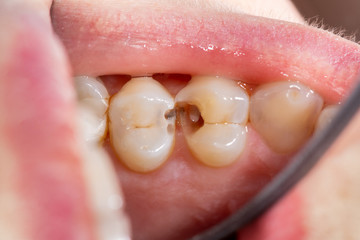Latest Update
 15 Sep 2020
15 Sep 2020 Can I pay off my dental bills?
Having to pay a large dental bill can be very frustrating and stressful for many people on a low, middle or fixed income. While many people save money to cover medical expenses, dental work often isn’t included in those savings; which puts dental health at the backbench. This further leads to worsening of the situation and loss of teeth, smile, confidence and self-esteem for a person. After the eyes, the smile is considered to be the feature that enhances our facial aesthetics. It should be no more difficult to pay for your dental bill then paying for two coffees per week from a café or your visit to the hairdresser every few months.
So if dental care is managed well, then it should not be expensive. In fact, dentistry is not expensive, neglect is.
Tips to manage dental bills:
- Go to your dentist regularly. As we all know, prevention is cheaper than cure.
- Generally, if a filling of a cavity is detected early the cost can be as little as $200 but if left to decay and rot, the same tooth can cost up to $5000 to save. If the tooth needs extraction then it can cost up to $7000 to replace the tooth. Given a decision between spending $200 or $7000, the answer is pretty obvious.
- Also, there are weekly payment plans available for routine checkup and cleans which generally have huge savings as well. This takes stress away from that cost as well.
- Most dentists will also give some loyalty discounts as well for taking the initiative to look after your teeth. So dentistry is not much strain on your pocket if planned well.
Yes, there would be cases where teeth are already in poor shape due to neglect over a period of time. In that case, just the preventive approach may not fit.
You can finance dental work for both necessary procedures such as cavities root canals, dentures as well as cosmetic dental work such as teeth whitening.
In a nutshell, the situation is not as hopeless as most of you would think. Most dental surgeries do have payment plans available to help you to bring your oral health on track. With these mostly interest-free payment plans, you can reduce the burden of your dental treatment and pay over regular instalments.
If you have been a long-standing patient at your dental office or if you have a payment history at the dentist that shows you can pay your bills on time, you may be able to arrange a payment plan with your dentist. You can then arrange to pay the remainder of the bill in fixed monthly payments.
Do not lose hope. You can call us today if you need to pay off your dental treatment. We offer Afterpay as well as finance and payment plan options both for preventative check-ups and treatments at all our surgeries in Willoughby East, Elermore Vale, Wingham and Tuncurry.
 15 Jul 2020
15 Jul 2020 Which filling should I choose for my tooth?
Which filling should I choose for my tooth?
This is not an uncommon question which most of us have to answer when we visit a dentist.
With dentistry evolving at such a high pace and with so many technological advances in dentistry, we have more and more options available now.
Although it is hard to explain all the differences between the different materials available, we can touch base on three main materials available to make the choice easy for you.
Amalgam
Amalgam (silver-coloured) dental fillings have been around for a very long time. It was first invented by English chemist Bell in 1819. Later on, it had some changes with mixing of other metals.
Amalgam is made up of a metal alloy of mercury, silver, tin and copper. It is mixed as a soft filling material that is placed into a prepared tooth and hardens over a short period of time.
It is a very reliable and durable material that was used for many years for dental fillings due to its success in a moist environment. However, due to its un-aesthetic nature with the dark colour, its use of mercury and some doubts in relation to release of mercury has led a quest to find an alternative filling material.
Although a lot of people have reservations about its release of mercury and effects on general health, it is not proven yet.
Composite
Another very popular material is composite which has almost replaced amalgam and is widely used at present.
It is made up of glass particles mixed with an acrylic resin. It comes in different viscosities, each chosen by the dentist for different reasons.
It is used as soft material then hardened with help of light. It is chosen due to the following benefits:
- Availability of multiples colour shades so the material can be matched to the tooth.
- Increased working time for the clinician to manipulate the material to suit the tooth structure
- Mercury-free
- Composite resins are able to bond, or stick, to the tooth, which can lead to less tooth removal during preparation
- Easy to use for small and simple repairs and restorations
It is not as hard as amalgam and has issues with longevity in large cavities due to wear, chipping margins, porosity and shrinkage. This leads us to another material; ceramic or porcelain.
Porcelain/Ceramic
In terms of terminology, porcelain fillings are often called inlays, onlays, ceramic or CEREC restorations whereas Composite or resin restorations are referred to as plastic white fillings. Composite Resin is placed in soft and set hard with the curing light, which leads to its shrinkage whereas the porcelain restoration is a hard prefabricated filling that is bonded into the cavity. When a filling is on the larger side, requiring corners or cusp replacements, composite restoration does not last long and porcelain has more longevity due to its lack of shrinkage, hardness and wear resistance and it is recommended to have porcelain reconstruction of the tooth to ensure that you are not back in the dental chair fixing the same tooth again any time soon.
The porcelain filling is no doubt more expensive, but when you consider you may have to replace a plastic resin filling over and over, the cost differential may prove to be a lot less than first envisaged.
- More longevity, wear resistance and durability.
- Better bonding to the tooth.
- Highly aesthetic result giving natural appearance.
- No shrinkage of filling material.
- Tooth-like transparency and smooth texture; ceramic is the closest we can get to natural tooth enamel.
- Excellent for large fillings, amalgam replacement, broken and cracked teeth.
- More cost effective long-term.
After a thorough check-up and diagnosis, your dentist will discuss which of these materials is best suited to you. The decision will be based upon your oral health and what material will be best suited to the type of work needed, both for restoration’s optimum function and appearance.
